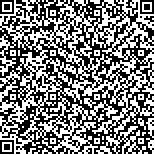| 引用本文: | 吕靖,蓝鑫,姜明玉,曹文瑞,萨仁高娃,于心科,常凤鸣.盐场海芽孢杆菌与大洋铁锰结核相互作用[J].海洋科学,2020,44(1):36-45. |
| |
|
| |
|
|
| 本文已被:浏览 1651次 下载 1153次 |

码上扫一扫! |
|
|
| 盐场海芽孢杆菌与大洋铁锰结核相互作用 |
|
吕靖1,2,3, 蓝鑫4, 姜明玉1,2, 曹文瑞1,2, 萨仁高娃1,2, 于心科1,2, 常凤鸣1,2
|
|
1.中国科学院海洋研究所 海洋地质与环境重点实验室, 山东 青岛 266071;2.中国科学院海洋大科学研究中心, 山东 青岛 266071;3.中国科学院大学, 北京 100049;4.哥伦比亚大学傅氏基金工程和应用科学学院, 美国 纽约 10027
|
|
| 摘要: |
| 本文研究了盐场海芽孢杆菌(Marinibacillus campisalis)与大洋铁锰结核的相互作用过程,以及海洋微生物在铁锰结核形成中的作用。实验选取从深海沉积物中分离培养的盐场海芽孢杆菌(Marinibacillus campisalis)和大洋铁锰结核样品进行相互作用实验,设置有菌组和无菌组,培养过程中间隔取样分析。运用X射线荧光光谱(XRF)分析测定大洋铁锰结核元素组成,通过电感耦合等离子体发射光谱(ICP-OES)和电感耦合等离子体质谱(ICP-MS)测定反应过程中Fe、Mn、Co、Ni、Cu等离子浓度的变化,通过透射电镜(TEM)、扫描电镜(SEM)和能谱仪(EDS)观察并分析微生物表面情况,利用X射线衍射(XRD)分析手段测定铁锰结核矿物组成的变化。实验进行1天内细菌处于对数生长期,有菌组的Fe、Mn等离子浓度增加;2— 7天内细菌处于稳定期,Fe、Mn等离子浓度有一定程度降低,但总体浓度均大于无菌组的离子浓度,金属离子被吸附在菌体表面,新形成了简单的含Fe化合物和矿物;实验结束后,XRD分析结果显示样品的矿物含量,如菱铁矿、赤铁矿和针铁矿等有轻微程度的增加。研究表明盐场海芽孢杆菌(Marinibacillus campisalis)能够促进释放铁锰结核中的Fe、Mn等元素,同时对释放出的金属离子又有富集作用,并能够诱导新矿物的形成。本研究为深入了解铁锰结核的生物成因提供了新的依据。 |
| 关键词: 铁锰结核 微生物 相互作用 成矿作用 |
| DOI:10.11759/hykx20190308002 |
| 分类号:P67 |
| 基金项目:国家自然科学基金项目(41976202,41576064,41830593);“全球变化与海气相互作用”专项项目(GASI-GEOGE-04) |
|
| Interaction between Marinibacillus campisalis and oceanic ferromanganese nodules |
|
LYU Jing1,2,3, LAN Xin4, JIANG Ming-yu1,2, CAO Wen-rui1,2, SAREN Gao-wa1,2, YU Xin-ke1,2, CHANG Feng-ming1,2
|
|
1.CAS Key Laboratory of Marine Geology and Environment, Institute of Oceanology, Chinese Academy of Sciences, Qingdao 266071, China;2.Center for Ocean Mega-Science, Chinese Academy of Sciences, Qingdao 266071, China;3.University of Chinese Academy of Sciences, Beijing 100049, China;4.Department of Earth and Environmental Engineering, The Fu Foundation School of Engineering and Applied Science, Columbia University in the City of New York, New York, NY 10027, United States of America
|
| Abstract: |
| This study was conducted to analyze the interaction between Marinibacillus campisalis and oceanic ferromanganese nodules and the effect of marine microorganisms on the formation of ferromanganese nodules. M. campisalis was isolated from deep sea sediments, and samples of oceanic ferromanganese nodules were selected for the interaction experiment. Bacterial and sterile groups were set up, and the samples were analyzed at intervals during the interaction process. The elemental composition of the ferromanganese nodules was determined by X-ray fluorescence spectrometry (XRF). The concentrations of Fe, Mn, Co, Ni, and Cu in the interaction process were measured by inductively coupled plasma optical emission spectrometry (ICP-OES) and inductively coupled plasma mass spectrometry (ICP-MS). The formation of minerals on the surface of microorganisms was observed and analyzed by transmission electron microscopy (TEM), scanning electron microscopy (SEM), and energy dispersive spectroscopy (EDS). Changes in the mineral composition of the ferromanganese nodules were determined by X-ray diffraction (XRD). The first day was the logarithmic growth period of microorganisms, during which the concentrations of Fe and Mn in the bacterial group increased. Within 2-7 days, the growth rate of microorganisms became stable, and Fe and Mn concentrations in the bacterial group decreased; however, the overall concentration was higher than that in the sterile conditions. Metal ions were adsorbed on the surface of microorganisms, and simple Fe-containing compounds and minerals were formed. XRD analysis demonstrated that the contents of iron minerals, such as siderite, hematite, and goethite, increased after the experiment. Therefore, M. campisalis promoted the release of Fe, Mn, and other elements in the ferromanganese nodules, enriched the released metal ions, and induced the formation of new minerals. This study provides a novel basis for understanding the biogenesis of ferromanganese nodules. |
| Key words: ferromanganese nodules microorganisms interaction mineralization |
|
|
|
|
|
|
